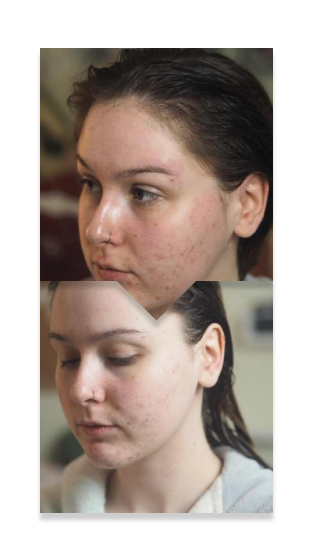
We've got BIG News, We're Moving to gorgeousshop.com - Save on Your Beauty Favourites Today!


Depressed and deep scars, red areas… we know acne scars can be a source of confidence issues and embarrassment. Whether you still suffer from breakouts or have leftover scars from teenage acne, the first thing many of us do is reach for the concealer. But what if we said you don’t have to cover up? That there’s a way to heal those acne scars.
Sound too good to be true? That’s exactly what the plastic surgeon and scientist duo who discovered it thought too! But this amazing ingredient is transforming the skincare of people across the globe. To understand more, let’s go back to basics.
You may be reading this thinking you’ve never had major breakouts so don’t have acne scars. Actually, there are different types of acne scars. Many of us have them but have learnt to live with them. So what are we talking about when we say acne scars?

Depressed Acne Scars
This is the kind of facial scarring you might immediately recognise as acne - depressed scars where the skin is left with a permanent series of dips. There are three main types of depressed acne scars:
Raised acne scars
More common across the back and chest areas than on the face, raised acne scars occur when there is too much collagen production during healing, leaving permanent raised areas.
Dark spots and dark marks
The dark spots and dark marks left behind after acne aren’t usually permanent and aren’t classed as scarring. However, if you suffer with regular acne breakouts it can feel like your skin tone is permanently uneven! We’re really excited that this remarkable acne scar ingredient also has an impact on these dark spots and marks.
It may sound like an obvious question… acne scarring’s caused by, well, acne, surely?! Actually, that’s not the whole picture. Yes, acne is the reason for scarring but it is actually about how your skin reacts when healing. An acne scar usually occurs in an area where there has been an infected spot. This causes the skin tissue beneath to deteriorate. When the spot bursts, the cause of the infection is removed but the skin below lacks the collagen needed to fill the space left. This leaves depressed marks and scars. When you squeeze acne spots you make it harder for your skin to recover and so make scarring more likely. Which is why the advice is… don’t squeeze!
If acne scarring is the result of your skin tissue not having enough collagen, then surely when it builds back up enough naturally the scarring will disappear? Not quite. Just like any scarring, once your skin has adapted and scarred, the area will likely need help to recover. This is especially true if the scarring is deeper, as more layers of the skin will be affected.
When it comes to removing acne scars there are many treatments out there – often costly and with no guaranteed results! Some people opt for laser surgery, removing a patch of skin around the scar to uncover a new layer of skin. Now if you have a number of scars, we’re sure you’ll understand this can be a long, involved and expensive process!

Surely there has to be a safe method to remove acne scars without resorting to spending thousands of pounds on surgery?! Well, that was the starting point for world leading scientist Dr Ardeshir Bayat and award winning cosmetic surgeon Dr Douglas McGeorge. They decided to work together to find an ingredient that could be used to safely remove acne scars on the face.

What they actually found was an ingredient that has stunned even them. Epigallocatechin Gallete, or EGCG for short(!) is a remarkable ingredient, extracted from green tea, that not only works to reduce acne scarring but also to protect skin against sun damage and inflammation, thicken skin and reduce wrinkles.
At Jersey Beauty Company, we know there are a lot of products on the market that have “miracle cure” claims, but no science behind them. We only stock products that have solid science behind them, so you can trust the products you get from us!
EGCG has been developed by a scientist and plastic surgeon research combo who outline three benefits, based in science, in healing acne scarring.
If you’ve been researching creams to remove scars, you’ll have come across lactic and salicylic acid. The way these ingredients work is to restructure the surface of the skin. This is just as it sounds… basically a slow process of skin peeling to uncover new skin.
The reason we’re so excited by Science of Skin’s Solution for Scars is that it doesn’t use these harsh chemicals but instead is full of natural products to heal acne scarring and promote skin health. Focusing on encouraging the healthy process of cell turnover, rather than skin resurfacing, EGCG is not the only natural ingredient in Solution for Scarring. There is also:
Skin in the middle of an acne breakout should be treated as an open wound, so you shouldn’t use Solution for Scars, or any other acne scar cream, on it. You may need to seek medical advice to prevent infection and complications. Once the wound has closed and started to heal, you can use Solution for Scars, even if the area remains reddened.
Don’t just take our word for it, try Science for Skin’s Solution for Scars on your skin to see its transforming effects. In fact we’re so convinced you will love it, we’re offering you a FREE sample to try for yourself!